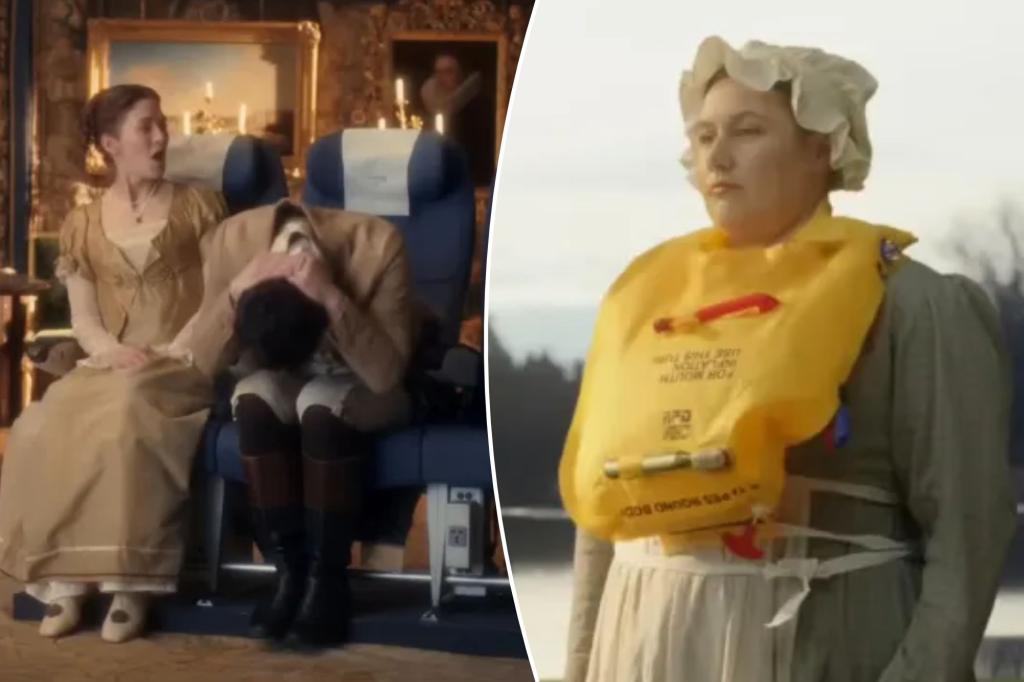Summarize this content to 2000 words in 6 paragraphs
Ready for a trip? Buckle up, because buzzy airline safety videos are taking off.
British Airways recently intrigued travelers — especially “Bridgerton” fan flyers — with their new safety video, styled as a comic period drama.
“Is it a winged creature of the air or, perchance, a celestial contrivance navigating the skies?” a 19th-century aristocrat asks in the extravagant clip. “No ma’am, that’s British Airways A350.”
While unusual airline safety videos are not exactly new, they’ve been getting more and more elaborate in recent years in a bid to attract the attention of passengers who have seemingly shrinking attention spans.
Back in 2007, Virgin America first had fun with a cautionary cartoon guiding guests through travel etiquette and their emergency advice.
From there, these videos have become less and less grounded.
In 2014, Air New Zealand dropped a “Lord of the Rings” inspired skit starring Elijah Wood and Peter Jackson complete with elves as flight attendants and Great Eagles replacing planes.
Blaise Waguespack, a professor at Embry-Riddle Aeronautical University in Florida and an expert in airline marketing, told The Washington Post that airlines have had to get creative to compete with the “clutter of content” vying for passengers’ attention — something that is “always an issue when attempting to deliver information today.”
British Airways said the new video was released to “keep customers engaged with important safety messaging.”
But can these clips be both entertaining and effective? Some experts claim it might all be too much to unpack.
A study published in Safety Science found that funny videos keep people’s attention more than star-studded or standard videos and help them remember key safety messages.
However, another study, published in Applied Ergonomics, concluded that “there was a trade-off between entertainment and education” and “the greater the entertainment value, the poorer the retention of key safety messages.”
“Any, overlap or confusion at the point of the key safety message — whether that’s entertainment, humor, etc. — undermines the safety message,” Brett Molesworth, a professor at the University of New South Wales in Australia, who worked on both studies, said.
Some airlines aren’t trying to land any jokes. This summer Emirates began showing their “No-Nonsense Safety Video” on their aircrafts.
“We do not have dancers breaking into song, characters from movies or celebrities trying to be funny I’m afraid,” a flight attendant says in the clip.
“Safety always comes first,” another adds.
While the research shows that flashy in-flight safety videos may have some people missing pertinent information, Scott Koslow, a professor of marketing at Macquarie University in Australia, said “you might actually get attention that you couldn’t get otherwise.”
“A little bit of confusion might just be a decent price to pay to get people to look at the screen,” he insisted.


